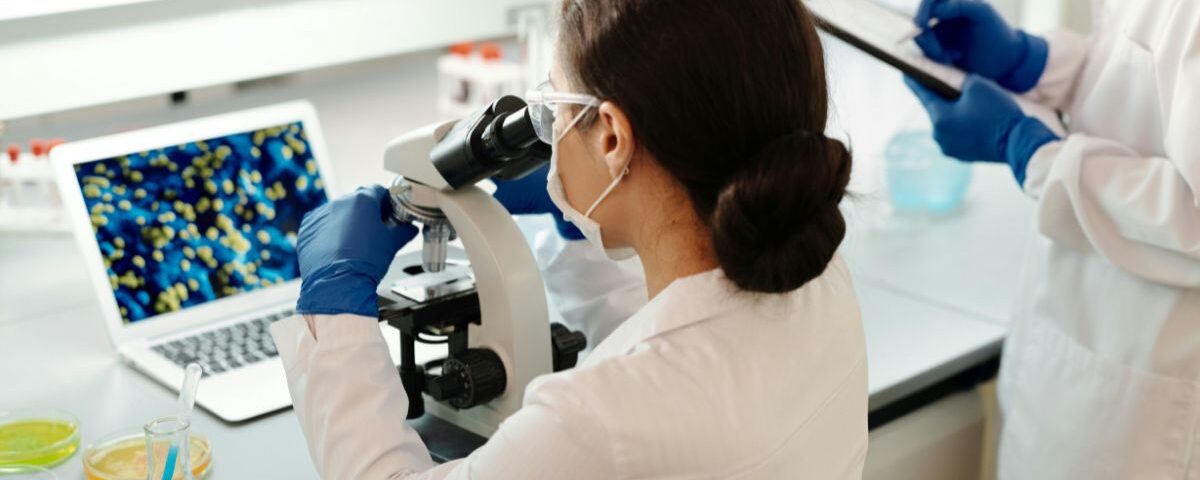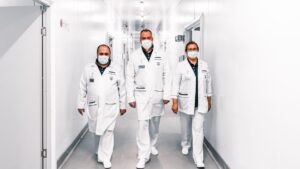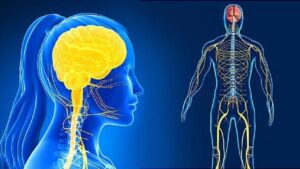To most med students, pathology is the study of disease—the “what went wrong” in the body. But for a Doctor of Osteopathic Medicine (DO), pathology is more than a list of mechanisms and microscopic slides. It’s the starting point for holistic, human-centered healing.
At SGA Middletown, osteopathic students are trained to view pathology not only as a basic science but as a window into the whole patient. This perspective makes all the difference in how they understand, diagnose, and ultimately treat illness.
What Makes the DO Perspective Unique in Pathology?
Osteopathic physicians are trained in the same rigorous medical sciences as their allopathic (MD) peers—but with added emphasis on:
- Whole-body connections
- Mind-body relationships
- Structure and function working together
- Osteopathic Manipulative Treatment (OMT) as a complement to pathology-based treatment
This means when DO students study disease, they go beyond the cell—they consider the person. For example:
| Disease | Traditional Focus | DO Perspective |
|---|---|---|
| GERD | Acid reflux & sphincter dysfunction | Plus posture, stress, diaphragm restrictions |
| Asthma | Bronchial inflammation & hyperresponsiveness | Plus rib mechanics, autonomic tone, psychosocial triggers |
| Osteoarthritis | Cartilage breakdown | Plus joint function, muscular compensation, lifestyle impact |
By integrating structure and function, DO students build a deeper, more actionable understanding of pathology.
How Pathology Is Taught at SGA Middletown?
At SGA Middletown, pathology is not just memorization of mechanisms—it’s a journey into clinical reasoning, histological identification, and human impact.
Here’s how students build their pathology foundation:
1. Systems-Based Learning
Pathology is integrated with systems like cardiology, pulmonology, GI, and more—ensuring disease mechanisms are learned in clinical context.
2. OMM & Pathology Integration
During labs and case discussions, students explore how OMM might affect or support treatment. For example, how lymphatic techniques can aid in infection recovery.
3. Case-Based Pathology Sessions
Students review real cases—from patient presentation to lab results—then dive into the pathophysiology behind the symptoms. This builds board-relevant reasoning skills.
4. Peer Teaching & Group Study
SGA-led pathology reviews help simplify hard topics like neoplasia, inflammation, and autoimmune diseases, using DO-centered analogies and high-yield mnemonics.
What DO Students Bring to the Study of Disease
- A whole-patient lens: Every symptom is part of a larger pattern.
- Hands-on thinking: How can structure and movement reflect or influence pathology?
- Preventive mindset: How do lifestyle, nutrition, stress, and alignment impact disease risk?
- Functional treatment planning: How can OMT support the body’s recovery?
This well-rounded mindset leads to stronger patient communication, deeper clinical empathy, and a more adaptable treatment style—especially in primary care, sports medicine, and family medicine.
Conclusion
For osteopathic students, pathology isn’t the end of the story—it’s the beginning of a deeper understanding of the patient.
By viewing disease through the lens of osteopathic principles, students at SGA Middletown are becoming the kind of doctors who don’t just treat symptoms—but who recognize how structure, function, emotion, and environment shape the body’s ability to heal.
It’s science—and soul—combined.
FAQs
How does pathology training differ in DO schools?
DO schools cover the same core pathology content but incorporate osteopathic principles like holistic care, structural relationships, and hands-on applications such as OMM.
Does understanding disease from a DO perspective help with COMLEX?
Yes. COMLEX often tests the integration of clinical, biomechanical, and physiological factors in disease—which is central to DO pathology thinking.
Can OMT actually influence disease mechanisms?
While OMT doesn’t cure disease directly, it supports the body’s function, improves circulation, and reduces barriers to healing—especially in chronic or inflammatory conditions.
Why is pathology considered so essential in medical education?
Because it’s the bridge between normal physiology and clinical medicine. Pathology helps students understand why patients get sick and how to intervene appropriately.




